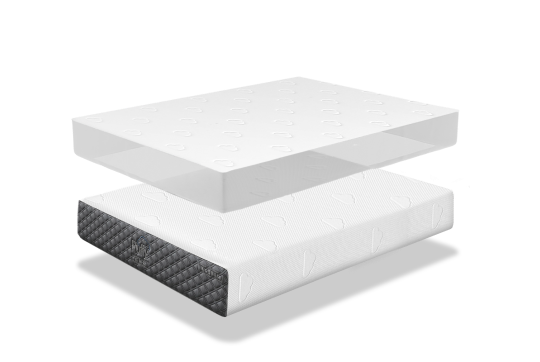Creating a DIY mattress protector is not only a cost-effective solution for safeguarding your mattress against spills, stains, and allergens but also allows for customization to perfectly fit your mattress’s size and shape.
Whether you’re looking to protect a high-quality mattress or need a specific material to meet your comfort needs, a DIY approach offers flexibility and personalization that store-bought protectors can’t match.
Why Opt for a DIY Mattress Protector?
- Customizable to fit any mattress size
- Choice of materials to suit personal comfort preferences and specific needs
- Cost-effective compared to high-end mattress protectors
- Satisfaction of creating something tailored to your needs
Materials Needed for a DIY Mattress Protector
- Waterproof layer (e.g., polyurethane laminate, PUL)
- Comfort layer (e.g., cotton, bamboo, terry cloth)
- Elastic or fabric ties for securing the protector
- Sewing supplies: machine, thread, needles, scissors, measuring tape
Pairing a DIY mattress protector with a Puffy Lux Mattress ensures that the advanced comfort and support features of the mattress are preserved.
Check out Puffy mattress reviews from real customers and see how we compare with other brands.
Step-by-Step Guide to Making Your DIY Mattress Protector
1. Measure Your Mattress
Before you begin, it’s crucial to accurately measure your mattress to ensure your DIY mattress protector fits perfectly. Measure the width, length, and height of your mattress. If you have a mattress topper or pad, include it in your height measurement to accommodate its thickness.
- Width x Length: Measure across the top of the mattress from edge to edge for both width and length.
- Height: Measure from the base where the mattress sits on the bed frame to the top of the mattress (including any topper).
2. Select Your Materials
Choosing the right materials is key to the success of your DIY mattress protector. For the waterproof layer, polyurethane laminate (PUL) is a popular choice due to its waterproof properties and breathability. For the comfort layer that will touch your skin, options include cotton, bamboo, or terry cloth, which offer softness and additional absorbency.
- Waterproof Layer: PUL fabric
- Comfort Layer: Cotton, bamboo, or terry cloth
- Elastic or Fabric Ties: To secure the protector to the mattress
3. Cut the Fabric
Based on your measurements, cut your chosen fabrics, adding a few inches to each dimension for seam allowances and to ensure the protector fully covers the sides of the mattress.
- Add Seam Allowances: Typically, add an extra inch on all sides for seam allowances.
- Cutting the Waterproof Layer: Ensure it matches the dimensions of your comfort layer.
4. Sewing the Layers Together
Place the comfort layer fabric on top of the waterproof layer, right sides facing each other. Sew around the perimeter, leaving a gap for turning the fabric right side out.
- Sewing: Use a durable thread and a sewing machine set to a straight stitch.
- Leaving a Gap: Leave an opening wide enough to turn the protector right side out (about 6-8 inches).
5. Adding Elastic or Ties
For a snug fit that prevents the protector from shifting, you can sew elastic banding around the corners or edges. Alternatively, fabric ties can be attached to the corners.
- Elastic Banding: Measure and cut four pieces of elastic. Sew them to the corners, stretching slightly as you sew.
- Fabric Ties: Cut four strips of fabric, fold them into ties, and sew them securely to each corner.
6. Finishing Touches
Turn the protector right side out through the gap you left open. Push out the corners for a neat finish and then topstitch the gap closed. Consider adding additional topstitching around the entire perimeter for added durability.
- Topstitching: This step not only closes the gap but also reinforces the edges of the protector.
- Quilting: If desired, add quilting stitches across the protector to prevent the layers from shifting.
Integrating a DIY mattress protector with a Puffy Lux Mattress can significantly enhance the mattress’s longevity and hygiene. The custom fit ensures full coverage, protecting against spills and allergens while preserving the comfort and quality of the mattress.
Use our store locator to find the closest furniture or mattress store near you and feel the cloudlike comfort of our Puffy Mattress in person.
Conclusion
Creating a DIY mattress protector is a rewarding project that offers protection and comfort tailored to your specific needs. By following this guide, you can ensure your mattress stays in excellent condition, extending its lifespan and enhancing your sleep quality.

- Oeko-Tex® Standard 100 certified.
- Hypoallergenic.
- Lifetime warranty.
- 101-night sleep trial.
- Free shipping and returns.












